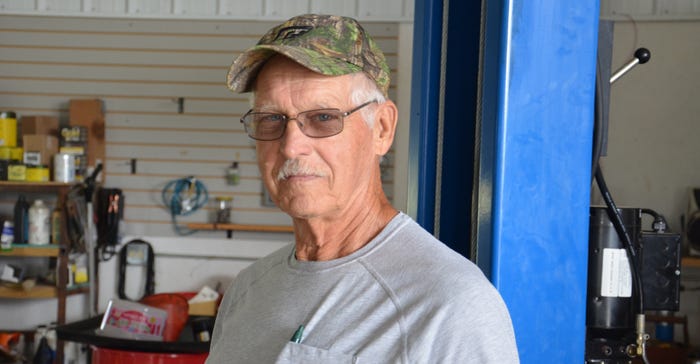
If you’ve longed for a better place to work on equipment but don’t think a big shop is in the financial cards this year, look at Rick McFall’s shop. It’s sized right for his operation and contains equipment he needs, but isn’t stocked with tools he won’t use very often.
McFall, North Vernon, Ind., is also excited about another feature of his shop: It is cost-efficient to operate. Even during a winter like this one, he can work comfortably in the shop without busting his utility budget.
“We went with radiant heat for the shop,” McFall says. “It seemed like the most cost-efficient option for this size of shop for my operation.”
A radiant heater running down the center of the shop near the ceiling provides the heat for the entire shop. He typically keeps the thermostat around 60 degrees F in the daytime, when he will be working in the shop. At night the temperature drops closer to 50 degrees.
Fueled by propane gas, heating costs are usually cost-effective, McFall says. In a typical winter, he can heat his shop for the entire season for around $700.
Efficiency is no accident. When thinking about the shop, he knew he wanted to insulate it as best he could to help keep it comfortable and still hold down costs. There is blown-in insulation behind the walls to help hold in heat.
He also used 2-inch-thick Styrofoam sheets, placed at strategic locations, to help keep out drafts and provide good working conditions. These sheets go 2 feet deep around the edge of the foundation.
Special feature
One thing McFall knew he wanted to include in the shop was a hoist. He knew what type of hoist he wanted and planned for it from the beginning.
Before the concrete floor went down, preparation was made for the hoist to provide a solid foundation for it. The hoist is rated at 12,000 pounds. He uses it when he does repairs and maintenance on his pickup and farm equipment.
His shop isn’t the only area where McFall has demonstrated good planning. In 2016 he worked with the Natural Resources Conservation Service and the Jennings County Soil and Water Conservation District to establish native forbs to aid pollinators on Conservation Reserve Program land.
“He was able to utilize the CRP-SAFE program and support the pollinator project on some of his cropland,” explains Jenny Vogel, NRCS district conservationist, based at North Vernon. SAFE stands for State Acres for Wildlife Enhancement.
McFall has 29 acres in the program. “I really enjoy it when the field turns yellow with black-eyed Susan blooms,” he says. “It just feels like the right thing to do.”
See pictures of his shop in the slideshow below.
About the Author(s)
You May Also Like




